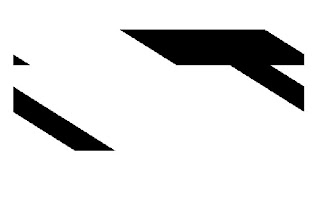


Below is the attempt of making a mosaic of the initial image above using photo images of flowes, grass and concrete taken from the school premises. Images taken such that they covered the entire color spectrum and ideal for taking color averages
pp











3(b) Images processing from www.pbase.com
My assigned images are pic1= 2nd row 2nd column, and pic2= 7th row, 2nd column
Both images saved in folder called "images" in my C drive
pkg load image;
cd'C:\images'
a=imread("pic1.jpg");
b= double(a)/255;
size(b)
Octave gives:
106 107 3


 Display of gray scale image
Display of gray scale image Display of RB face
Display of RB face  12.RG face of color cube
12.RG face of color cube 13. GB face of color cube
13. GB face of color cube
 x(:,:,1) = ones(256);
x(:,:,1) = ones(256); 16. YC face of color cube
16. YC face of color cube









The graphs represent the dominant wavelenth for a giveen ratio trichromatic coefficients
3 One approach involves treating the components as postion vectors and assigning each point a vector. Vector C1 for color 1, C2 for color 2, and vector C for color C. The color C or vector C can be represented as a linear comination of vector C1 and C2 as follows. ( Refer to diagram below)
OC = OC + aC1C2 = OC1+ a(OC2 - OC1) = OC1+ aOC2 - aOC1 = OC1(1-a) + aOC2=
(1-a)(X1, Y1) + a(X2, Y2) = ((1-a)(X, (1-a)Y1) + (aX2, aY2) =
((1-a)X1, (1-a)Y1) + (aX2, aY2) = ((1-a)X1 + aX2, (1-a)Y1 + a Y2)
where 0<= a<= sqr((x2-x1)^2 + (y2 - y1)^2)

5. The RGB components are given by the following equations
B= I(1 - s)
R = I[ 1 + ScosH/cos(60' - H) ] and G = 3I - (R + B)
The transformation that inversts the RGB componenets is R', B' and C'
where R' = 1-R, B' = 1 -B, and C' = 1 -C
2. All of the 16 possible binary functions can be represent using only compostions of { NOT, IMPLY}. This is true because IMPLY is composed of NOT and OR and using De Morgan's Laws one can obtain AND statement. Therefore aremed with NOT, OR, AND one can generate all 16 functions.
3. Indepotence describes properties of operators that yield the same result after the operation is applied a multiple of times. ex NOT (NOTX) = X. The binary operators that exhibit this property include: AND, OR and NOT and all operators that build on these fundamental operators.
4. Given trinary inputs (0,1,2) the number of possible binary operations is 3^3^2 = 19683
5. There are 3 binary operators required to represent every possible two argument function on trinary operations are NOT, OR, AND and IMPLY
6. Using GIMP to create the following

(pic1 AND pic2)

(pic1 OR pic 2)
(pic 1 IMPLY pic 2)

7. Let C = change in blood chemistry, R= residue poisin in stomach, P = death by poisin through needle, M = puncture marks
Corresponding operations to statements listed in assignment in order.
P IFF ( C OR R )
NOT ( C OR R ) AND M
M IMPLY P
NOT P IMPLY NOT M
Orders of Magnitude
1. Commodore 64 had 64 K memory = 2^6 K. A computer with 1 GB memory = 2^10 x 2^10 K= 2^20 K
Therefore a 1 GB memory has 2^20/2^6 = 2^14 = 16384 times more storage than a 64 K.
2. A 51/4 disk -> 800K, A DVD --> 4.7 GB = 4.7 x 2^20 K
Therefore 1 DVD is equivalent to 4.7 x 2^20 / 800 = 6160.384 disks
3. Promoting clock speed ( or CPU speed ) used to be a major selling feature in computer advertisements in the 1990's. One such computer; the Apple's 'Power Macintosh 8100/110" had a clock rate of 110 MHz which beat the fastest Intel processor at the time of 100 MHz.
Today's computer clock speeds are as high as. One such model available to the general public is the Dell Precision T7400 has a CPU speed of 3.4 GHz. This turns out to be just over 3oX faster than the 1990 models.
It should be noted that comparison of clock speed between different CPU families is not uselful since certain families of chips are faster in certain tasks and slower than other. One comparison of CPU speeds within the same family gives an accurate picture.
Source
http://en.wikipedia.org/wiki/Clock_rate
http://www1.ca.dell.com/content/products/productdetails.aspx/precn_t7400?c=ca&cs=calca1&l=en&s=biz